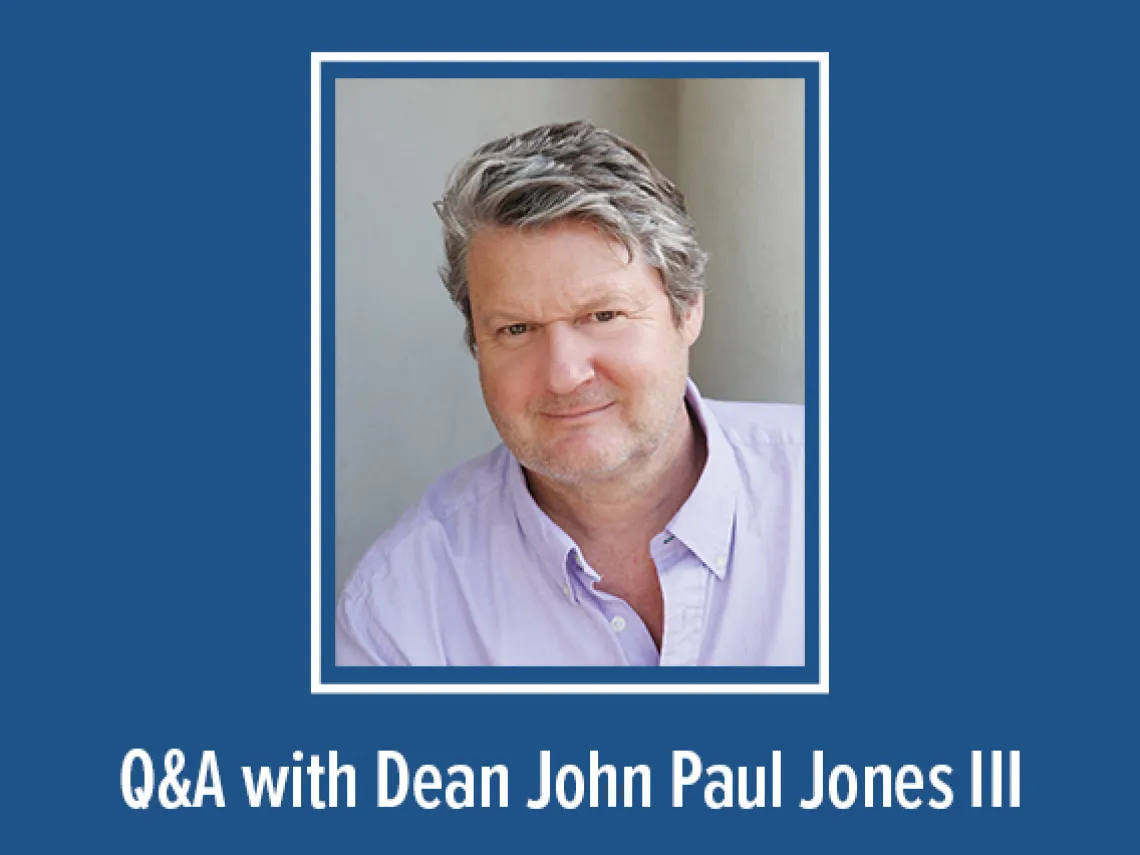Q&A with John Paul Jones III, Don Bennett Moon Dean of SBS

Q. Let’s talk about COVID-19. As dean of one of the largest colleges at the University of Arizona, you are trying to provide a quality education for thousands of students and support faculty and staff. What are the biggest challenges and possible consequences of the current situation?
A. The biggest challenge has been uncertainty. The summer has seen us preparing for an in-person return, as well as for various remote and hybrid modalities. The path we forged early in the summer was disrupted by the mid-to-late summer COVID-19 spike in Arizona, and with that there has been a great deal of alarm on the part of faculty and staff – and students and their parents – about returning to traditional in-person teaching, no matter what safeguards we might try to implement in the classroom (e.g., masks, testing, cleaning, distancing). These fears are justified; we all feel them.
As to the consequences – and here I’ll stick to pedagogy rather than the ever-present health impacts – I’m a strong advocate for the traditional model, especially for undergraduates. Being on campus, learning in classrooms and labs, having normal interactions with faculty, advisors, and one’s fellow students – this is life changing for students. That’s why our graduates are so loyal to the institution. We want to retrieve that model, but COVID-19 is the decider.
Q. How do you see this pandemic transforming higher education?
A. As I hinted above, we are entering into a period of rapid evolution. A dependable vaccine will get us back in the classroom, but we will never be the same after this pandemic. Technology must play an increasingly larger role in the pedagogy of the future, even as we strive to return to normal. If COVID-19 lingers, our universities will have fewer international and in-person students. We will lose the intimacy of in-person contact and the learning that gives it such value. This is when, for example, an attentive faculty member is able to look across the room and read a student’s emotional register – from “I don’t get it, but don’t want to raise my hand” to “Ah ha! That’s brilliant!” That’s hard to do remotely.
Finally, COVID-19 is hastening what has been predicted for quite some time: the realignment of higher education. We will have fewer institutions, and there will be greater distinctions between a smaller number of elite private and flagship publics focusing on the teaching and research and all the rest.
Q. The killing of George Floyd and countless more before him revealed how much work must be done to overturn structural racism. The subsequent protests and unrest illuminated the hunger for real change. What do you see as the college’s role and responsibility here?
A. Our role is clear: teach, research, and support the current movements as they progress on their racially and socially just agendas. And our responsibilities are huge, for we have the largest number of faculty on this campus with deep expertise in diversity and identity, in social and economic justice, and in anti-racist, anti-colonialist, anti-classist, Indigenous, feminist, and LGBTQ theory and practice. We must deploy all these resources in a coordinated way, beyond individual scholarship or disciplinary boundaries, so as to help our students and communities understand and confront structural racism – and its correlates. But we must also mobilize our expertise at the institutional level. We must lead meaningful discussions that lead to transformative practices around diversity and inclusion, and we have to guide this into every nook and cranny of the university.
Q. Some people during this quarantine have learned how to bake bread. Others binge watch Netflix. What has been some of your personal pandemic coping mechanisms?
A. Oh boy. I basically Zoom or email all day, and, like a lot of us, try to make progress on the nest during the weekends. My biggest regrets are not taking on a big project of self-improvement – improving my Spanish, really getting fit, reading the great novels – and not being able to see more of, and hug, my (adult) kids. But I do like listening to music and was recently asked to contribute to a Spotify “Bear Down and Rock Out!” playlist. I chose two songs by Tucson’s own Linda Ronstadt – “It’s So Easy” and “La Charreada.”
Q. What is your message for the alumni, donors, and friends of SBS who want to support the students and research in SBS but may also be struggling themselves?
A. Take care of yourself and your family first. But if you have the resources to help, then contributing to the university’s student emergency fund is a great place to start. If you have more resources, consider supporting or endowing a scholarship – whether for a student in your favorite discipline or simply in the college overall. And with our current financial situation, which is worse than it has ever been, those with resources and a desire to make a lasting impact might consider underwriting a faculty member’s line or research activity through a named chair or professorship. We have so many outstanding faculty to support, and large gifts can help us keep them here while enhancing the quality of their work in and beyond the classroom.
##
This Q&A was part of the 2020 SBS Developments magazine.

